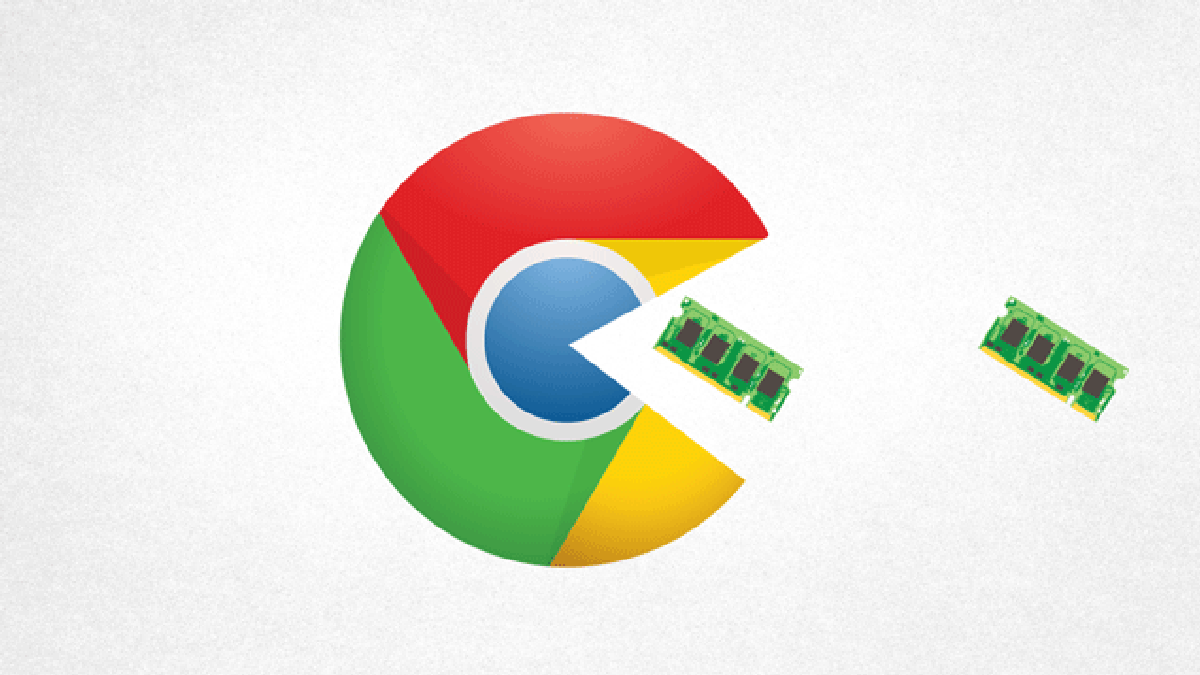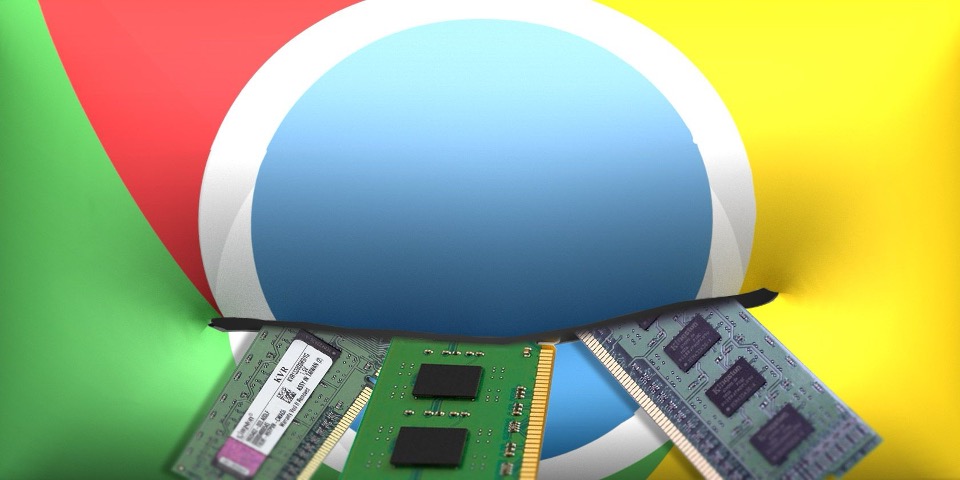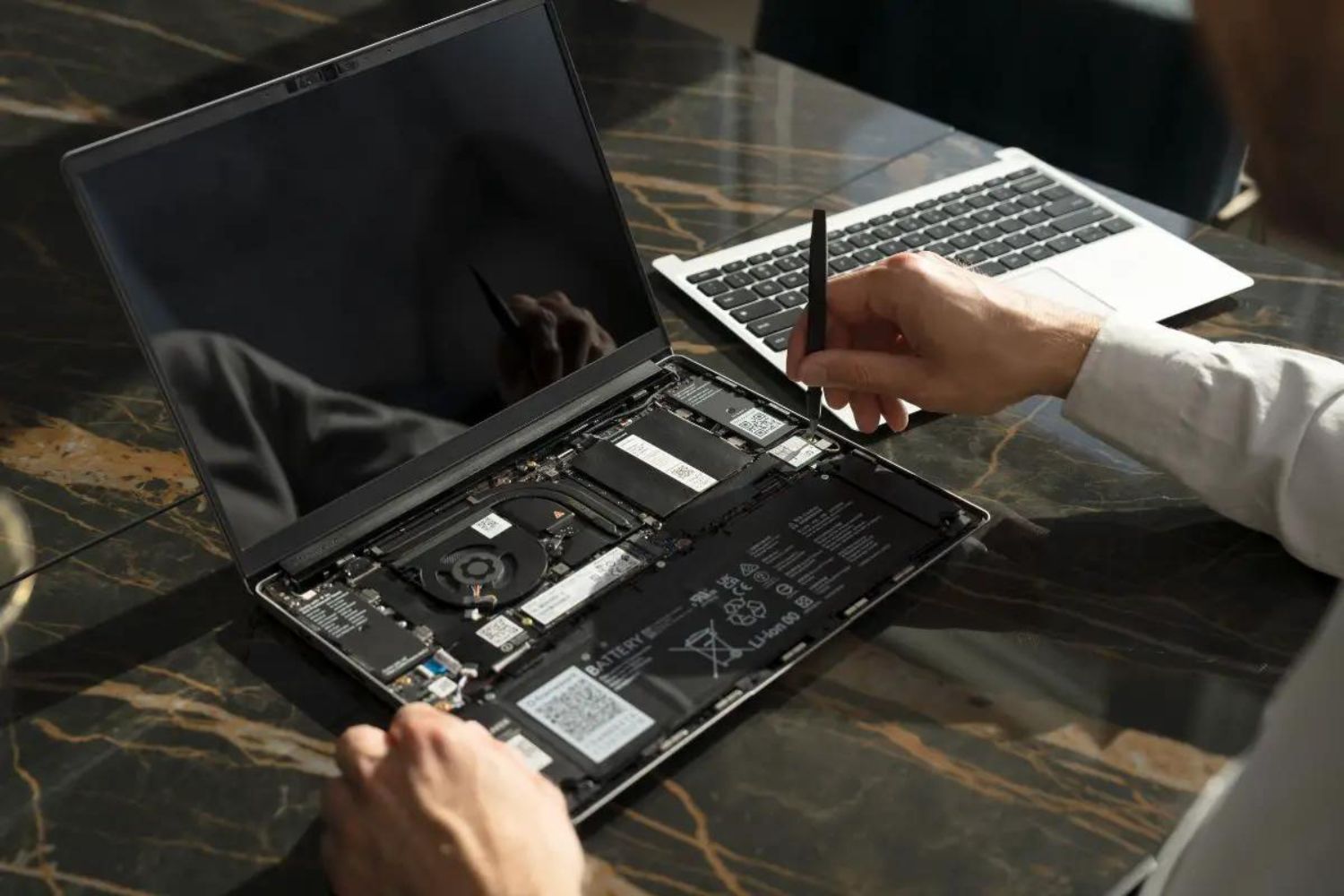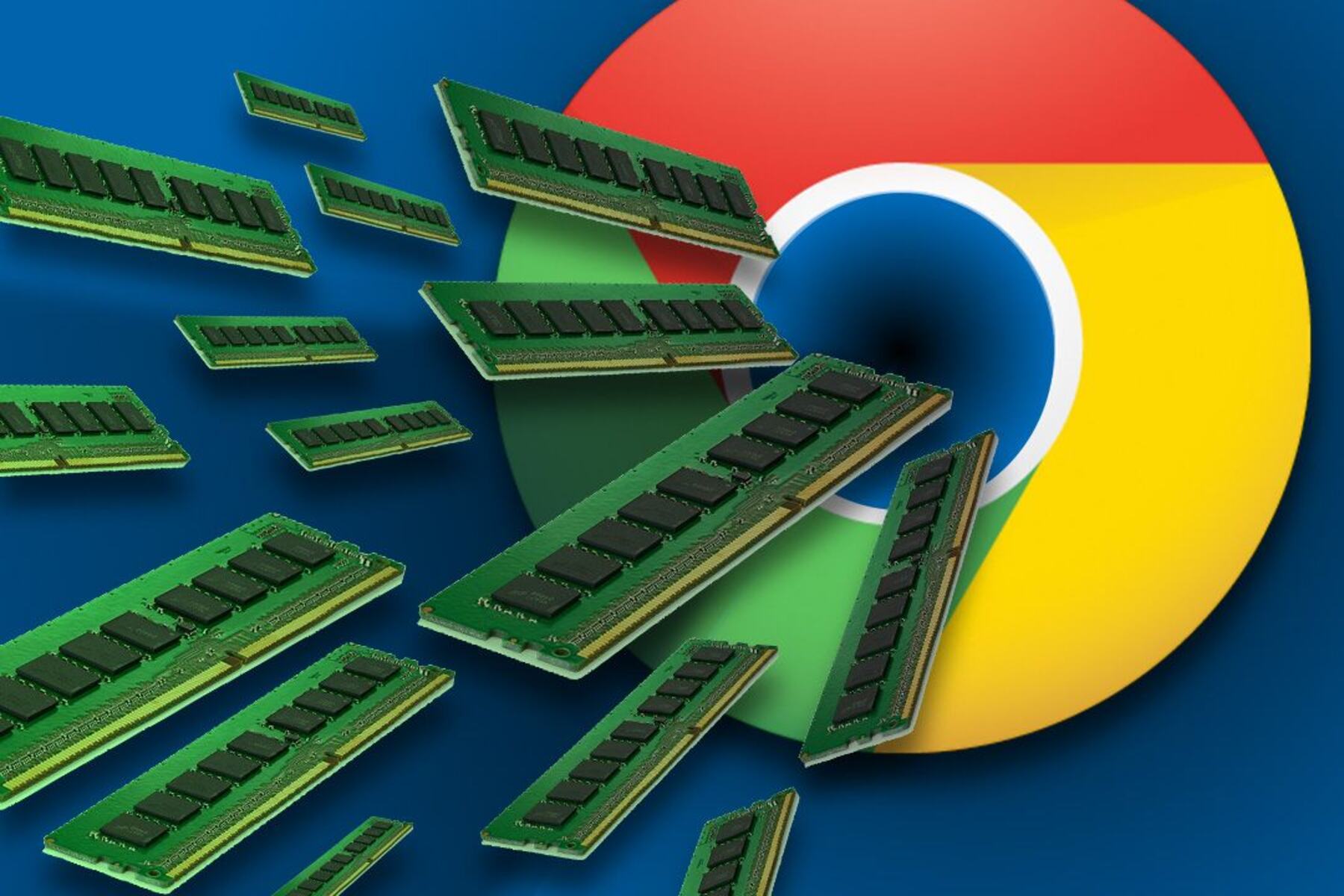Introduction
Chrome is undoubtedly one of the most popular web browsers in the world, renowned for its speed, security, and user-friendly interface. However, many users often find themselves perplexed by the seemingly excessive amount of RAM that Chrome consumes. As they open multiple tabs and extensions, the memory usage can quickly escalate, hindering the performance of their computers. But why does Chrome take up so much RAM?
To understand this issue, it’s essential to delve into the role of RAM in a computer’s operation. RAM, also known as Random Access Memory, is a vital component that stores data for the computer to access quickly. It acts as a temporary storage space, allowing the system to efficiently run multiple programs simultaneously. As users open applications or browse the internet, these programs store data in RAM for immediate access, resulting in faster response times.
Chrome’s high RAM usage can be attributed to its unique memory management system. Unlike other browsers, Chrome operates on a process-based architecture, where each tab and extension runs as a separate process. This design offers several advantages, such as better stability and security. However, it also means that each process requires its own portion of memory, contributing to overall higher RAM usage.
Several factors contribute to Chrome’s high RAM usage. One of the main culprits is the extensive use of extensions and plugins. While these add-ons enhance the functionality of the browser, they also consume additional memory resources. Each extension or plugin runs as a separate process, leading to a higher memory footprint.
Furthermore, Chrome’s ability to handle multiple tabs simultaneously can also impact RAM usage. Each open tab runs as a separate process, allowing for improved stability. However, having numerous tabs open simultaneously can strain system resources, as each tab consumes a portion of available memory.
Additionally, hardware limitations can affect Chrome’s RAM usage. Older computers with limited RAM capacity may struggle to handle Chrome’s resource-intensive demands. Insufficient RAM can lead to slower performance, excessive page swapping, and increased reliance on disk storage, further slowing down the system.
While Chrome’s high RAM usage may initially seem alarming, there are ways to mitigate and reduce its impact. In the following sections, we will explore various measures that can help optimize Chrome’s RAM usage, ensuring smoother performance and efficient resource management.
Understanding RAM and its role in a computer
RAM, or Random Access Memory, plays a crucial role in the operation of a computer. It serves as a temporary storage space for data that the computer needs to access quickly. When you launch an application or open a website, the relevant data is loaded into RAM to facilitate fast and efficient processing.
Think of RAM as the workspace for your computer’s current tasks. It holds the information that the processor needs to perform calculations and execute instructions. The more RAM your computer has, the more tasks it can handle simultaneously without slowing down.
RAM differs from long-term storage like hard drives or solid-state drives (SSD) in that it is volatile, meaning it loses its contents once the computer is powered off. This volatile nature allows for fast read and write operations, making it ideal for temporary data storage.
When you open an application or visit a website, the computer transfers the required data from the storage device into RAM. The processor then accesses the data from RAM instead of fetching it directly from the slower storage device. This significantly improves the speed and responsiveness of the system.
RAM also contributes to multitasking capabilities. It allows the computer to run multiple applications simultaneously, switching between them seamlessly. Each running program is allocated a portion of the available RAM to store its data and execute its operations. The more programs or tabs you have open, the more RAM is allocated to handle their needs.
However, RAM has its limitations. If the available RAM is fully utilized, the computer may start using virtual memory, which involves temporarily storing excess data on the hard drive. This process, known as paging or swapping, can result in slower performance as the computer needs to constantly read and write data between RAM and the storage device.
Understanding the role of RAM in a computer is crucial for comprehending why high RAM usage, as seen in Chrome, can impact system performance. As we explore the reasons behind Chrome’s substantial RAM consumption in the following sections, keep in mind how RAM functions as a vital component in facilitating efficient and responsive operations.
Chrome’s memory management system
One of the reasons behind Chrome’s significant RAM usage is its unique memory management system. Unlike traditional browsers, Chrome operates on a process-based architecture, where each tab and extension runs as a separate process. This approach offers several advantages but also contributes to higher memory consumption.
By running each tab and extension as a separate process, Chrome provides enhanced stability and security. If a single tab or extension crashes, it does not affect other components, preventing the entire browser from shutting down. This isolates potential issues and ensures a smoother browsing experience.
However, the process-based architecture comes with a memory overhead. Each process requires its own dedicated portion of memory, leading to increased RAM usage. With multiple tabs and extensions open, the memory footprint can quickly escalate.
Chrome’s memory management system is designed to optimize the distribution of resources. It dynamically allocates memory to active tabs and extensions based on usage and priority. Tabs or extensions that are actively in use are allocated more memory, while those in the background or with minimal activity receive fewer resources.
Another component of Chrome’s memory management system is the use of a “sandbox” for each tab and extension process. Sandboxing isolates potentially malicious code and prevents it from accessing sensitive information or impacting other processes. While this improves security, it also contributes to the overall memory consumption.
To further optimize memory usage, Chrome employs a feature known as “tab discarding.” When system resources become strained, Chrome can discard inactive tabs from memory while keeping their state intact. When a discarded tab is revisited, Chrome reloads the page, restoring it to its previous state. This mechanism helps free up memory for active tasks while minimizing the impact on user experience.
It’s important to note that Chrome’s memory management system is designed to prioritize performance and stability over minimal RAM usage. While this may result in higher memory consumption compared to other browsers, it ensures a smoother and more reliable browsing experience.
Now that we understand Chrome’s unique memory management system, we can explore the factors contributing to its high RAM usage and discuss ways to mitigate and optimize the browser’s memory footprint.
Factors contributing to high RAM usage in Chrome
Several factors contribute to the high RAM usage observed in Chrome. Understanding these factors can help shed light on why Chrome consumes a significant amount of memory compared to other browsers.
1. Extensions and plugins: Chrome offers a vast library of extensions and plugins that enhance its functionality. While these add-ons can be useful, they also contribute to increased RAM usage. Each extension or plugin runs as a separate process, consuming additional memory resources. Therefore, the more extensions and plugins you have installed, the more memory Chrome requires.
2. Multiple tabs and processes: Chrome’s process-based architecture runs each tab and extension as a separate process. While this improves stability and security, it also means that each process requires its own portion of memory. Having numerous tabs open simultaneously can significantly contribute to high RAM usage. Each open tab consumes memory to store its data and execute its operations.
3. Hardware limitations: Chrome’s RAM usage can be influenced by the hardware capabilities of your computer. If you have limited RAM capacity, Chrome may strain system resources, leading to sluggish performance. Insufficient RAM can result in frequent page swapping, where the computer needs to transfer data between RAM and disk storage, causing delays and increased reliance on slower storage devices.
4. Memory leaks: Although rare, memory leaks can occur in individual tabs or extensions, leading to excessive RAM consumption. A memory leak is a situation where a program or process fails to release memory after it is no longer needed. Over time, these leaked memory resources can accumulate, increasing Chrome’s overall RAM usage.
5. Media-rich websites and applications: Websites and applications that contain a lot of media elements, such as videos, images, and animations, can consume more memory when loaded in Chrome. These media-rich elements require additional resources to render and display properly, contributing to higher RAM usage.
While these factors contribute to high RAM usage in Chrome, it’s important to note that the browser is continuously optimizing its memory management system to improve efficiency. Chrome’s priority is to provide a smooth and stable browsing experience, even if it means consuming more memory than other browsers.
Now that we have explored the factors contributing to Chrome’s high RAM usage, let’s delve into strategies to reduce Chrome’s memory footprint and optimize its performance.
Extensions and plugins
One of the major contributors to high RAM usage in Chrome is the use of extensions and plugins. While these add-ons can provide additional features and functionality to the browser, they can also significantly impact memory consumption.
Each extension or plugin in Chrome runs as a separate process, which means that it requires its own portion of memory. As a result, having multiple extensions and plugins installed can quickly add up to a substantial amount of memory usage.
It’s important to note that not all extensions and plugins are created equal when it comes to memory consumption. Some may have a minimal impact on memory usage, while others can significantly affect performance and memory resources.
To manage extensions and plugins more effectively, it’s advisable to periodically review and uninstall any that are not necessary or no longer in use. By reducing the number of active extensions and plugins, you can potentially free up valuable memory resources.
Furthermore, it’s worth considering alternative approaches or lightweight alternatives to commonly used extensions. For example, instead of having separate extensions for blocking ads, managing passwords, and taking notes, you could explore consolidated solutions that provide multiple functionalities in a single extension.
When choosing extensions, it’s also essential to check reviews and ratings from other users. Highly-rated extensions often indicate better performance and efficiency, while poorly-rated ones may have known issues related to memory usage or performance.
In addition to managing extensions, it is crucial to keep them up to date with the latest versions. Developers often release updates that address bugs, security vulnerabilities, and performance improvements. By updating your extensions regularly, you can benefit from optimized memory usage and improved overall performance.
Lastly, it’s recommended to periodically audit your extensions by using built-in browser tools or third-party extension managers. These tools can provide insights into the impact of each extension on memory usage, CPU usage, and other system resources. You can then make informed decisions about which extensions to keep, disable, or uninstall based on their impact on memory usage and overall browsing experience.
By managing extensions and plugins effectively, you can minimize Chrome’s memory usage and optimize the performance of your browser.
Multiple tabs and processes
One of the features that sets Chrome apart from other browsers is its ability to handle multiple tabs simultaneously. While this allows for seamless multitasking and efficient browsing, it also contributes to higher RAM usage.
Chrome employs a process-based architecture, where each tab and extension runs as a separate process. This design enhances stability and security since a single tab or extension crash does not affect the entire browser. However, it also means that each process requires its own portion of memory.
As a result, having numerous tabs open simultaneously can significantly impact RAM usage. Each open tab consumes memory to store its data and execute its operations. The more tabs you have open, the more memory Chrome needs to allocate to handle their individual requirements.
While the exact amount of RAM consumed by each tab depends on various factors, such as the complexity of the webpage, the number of media elements, and any running scripts or plugins, it’s safe to assume that each tab consumes a reasonable amount of memory.
To mitigate the impact of multiple tabs on memory usage, Chrome utilizes a feature called “tab discarding”. When system resources become strained, Chrome can discard inactive tabs from memory while preserving their state. When you revisit a discarded tab, Chrome reloads the page, restoring it to its previous state.
Additionally, Chrome provides users with the ability to suspend inactive tabs, reducing their memory footprint. This can be done manually through the browser settings or by using specialized extensions that automatically suspend tabs after a certain period of inactivity.
Managing your tabs effectively can also help minimize the impact on RAM usage. Periodically closing tabs that are no longer needed or bookmarking them for later can free up memory resources. It’s also worth considering tab management extensions that allow you to group tabs, prioritize active ones, or unload tabs from memory while preserving their state.
Another approach to managing multiple tabs is to use Chrome’s built-in feature of “pinning” tabs. By pinning frequently visited tabs, you can reduce their memory usage, as pinned tabs consume less memory compared to regular tabs. Pinned tabs display only the website’s favicon, saving valuable space and minimizing memory overhead.
However, it’s important to strike a balance between multitasking and RAM usage. If you find yourself regularly running out of memory or experiencing sluggish performance, consider closing unnecessary tabs or using tab suspending and group management features to optimize memory allocation.
By employing these strategies and being mindful of the number of open tabs, you can minimize Chrome’s RAM usage while still enjoying the benefits of multitasking and efficient browsing.
Hardware limitations
While Chrome’s high RAM usage can be attributed to its design and feature set, it’s important to consider the hardware capabilities of your computer, as they play a significant role in determining the browser’s performance and memory consumption.
Older or low-spec computers with limited RAM capacity may struggle to handle Chrome’s resource-intensive demands. Insufficient RAM can lead to slower performance, excessive paging (where data is swapped between RAM and disk storage), and increased reliance on slower storage devices. As a result, Chrome’s memory usage may be more pronounced on such systems.
It’s worth noting that modern websites and web applications have become more complex, with richer media content and demanding underlying technologies. These resource-intensive elements can strain a computer’s hardware, especially when multiple tabs are open simultaneously.
If you consistently experience high RAM usage and sluggish performance in Chrome, you may want to assess your computer’s hardware configuration. Consider upgrading your RAM to a higher capacity, which allows for smoother multitasking and can help alleviate Chrome’s memory demands. Adding more RAM can provide additional headroom for handling multiple tabs and resource-intensive web content without overwhelming system resources.
However, upgrading hardware is not always a feasible option for everyone. In such cases, optimizing your browsing habits can help alleviate the strain on your computer’s resources. Close unnecessary tabs, limit the number of active extensions, and manage system resources by avoiding running memory-intensive applications concurrently with Chrome.
Additionally, it’s a good practice to regularly clear browser cache and cookies, as they can accumulate over time and consume valuable disk space. Clearing these temporary files can help free up disk space and optimize overall system performance.
By being mindful of your computer’s hardware limitations and implementing strategies to optimize resource usage, you can strike a balance between Chrome’s memory requirements and your system’s capabilities, ensuring smoother browsing experiences.
How to reduce Chrome’s RAM usage
Although Chrome’s high RAM usage is a known aspect of the browser, there are several steps you can take to reduce its memory footprint and optimize its performance. By implementing these strategies, you can strike a balance between browsing experience and resource consumption:
1. Manage your extensions: Periodically review and uninstall unnecessary or unused extensions. Each extension consumes memory, so reducing the number of active extensions can free up valuable resources.
2. Disable or remove unnecessary plugins: Plugins, such as those used for media playback or PDF viewing, can consume significant memory. Disable or remove plugins that you rarely use or switch to lightweight alternatives.
3. Limit the number of open tabs: Each open tab consumes memory, so be mindful of how many tabs you have open simultaneously. Close tabs that are not in use or consider using tab suspending extensions to free up memory.
4. Optimize memory settings: Chrome provides various experimental settings that can help reduce memory usage. Type “chrome://flags” in the address bar and search for options like “Tab Discarding” or “Automatic Tab Discarding” to enable memory-saving features.
5. Use the “Great Suspender” extension: This extension suspends inactive tabs, freeing up memory while preserving their state. It automatically suspends tabs that haven’t been used for a certain period, helping reduce memory consumption.
6. Be cautious with resource-intensive websites: Media-rich websites, video streaming platforms, and web applications can consume significant memory. Avoid having too many of these resource-intensive websites open at the same time to optimize memory usage.
7. Regularly clear browsing data: Clearing your browsing history, cookies, and cache can help free up disk space and ensure that Chrome is running efficiently. Access the Chrome settings, go to “Privacy and security,” and click on “Clear browsing data” to remove accumulated data.
8. Update Chrome: Ensure that you have the latest version of Chrome installed. Developers often release updates that optimize memory usage and improve overall performance.
9. Upgrade your computer’s RAM: If you consistently experience high RAM usage and have an older or low-spec computer, consider upgrading your RAM to improve performance and better accommodate Chrome’s resource demands.
Remember that these measures are not exhaustive, and the effectiveness may vary depending on your specific usage patterns and hardware configuration. It’s important to find the right balance that suits your browsing needs while utilizing system resources efficiently.
By employing these strategies, you can reduce Chrome’s RAM usage, improve overall performance, and ensure a smoother browsing experience.
Conclusion
Chrome’s high RAM usage has been a subject of concern for many users, but understanding the factors contributing to this issue can help alleviate frustration and optimize the browser’s performance. We explored how Chrome’s unique memory management system, extensive use of extensions and plugins, multiple tabs and processes, hardware limitations, and media-rich websites can all contribute to higher RAM usage.
While Chrome’s design and feature set inherently result in increased memory consumption compared to other browsers, there are steps you can take to minimize its impact. Managing extensions, closing unnecessary tabs, optimizing memory settings, clearing browsing data, and upgrading your computer’s RAM are all effective strategies that can help reduce Chrome’s RAM usage and optimize its performance.
It’s essential to keep in mind that balancing memory optimization with the browsing experience is key. Each user may have different needs and preferences when it comes to extensions, plugins, and the number of tabs open. By implementing these strategies and finding the right balance, you can ensure smoother browsing experiences while using Chrome efficiently.
As technology and web content continue to evolve, it is expected that browser developers will continue to refine memory management systems and optimize resource usage. Keeping Chrome up to date with the latest version will help you benefit from these improvements and ensure that you are leveraging the most efficient memory management capabilities.
Remember, achieving optimal RAM usage in Chrome is a continual process that requires regular assessment, monitoring, and adjustment. By staying proactive and maintaining good browsing habits, you can make the most of Chrome’s features while keeping memory consumption under control.

























